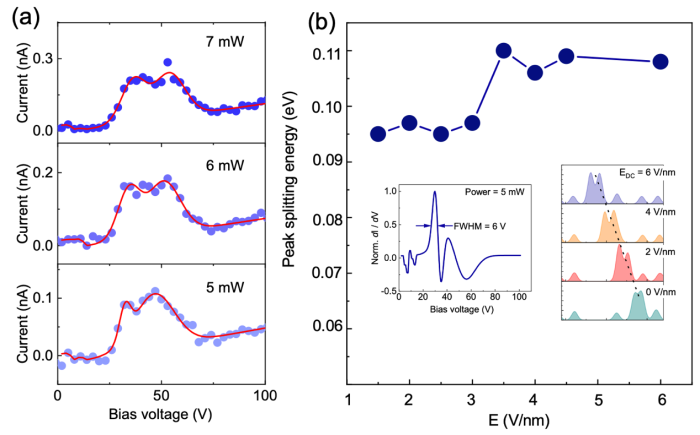
Share
Announcement/2023-10-13
Exploring dynamic processes on extreme spatiotemporal scales is of great significance for promoting the development of science and technology. In the microscopic field, most motion processes are ultrafast, especially at the atomic level spatial scale, whe

Exploring dynamic processes on extreme spatiotemporal scales is of great significance for promoting the development of science and technology. In the microscopic field, most motion processes are ultrafast, especially at the atomic level spatial scale, where ultrafast processes can reach durations of femtosecond or even attosecond. Given that ultrafast characterization technology has played a fundamental role in the advancement of science and technology, this year's Nobel Prize in Physics is awarded to scientific research achievements related to attosecond light pulses. Compared to ultrafast optical pulses, ultrafast electronic pulses exhibit advantages in both high temporal resolution and high spatial resolution, making them considered the next generation of ultrafast characterization techniques that may surpass attosecond optical pulses.
The monochromaticity of electronic sources is crucial for achieving high temporal spatial resolution simultaneously. However, the strong interaction between electrons and the light field leads to a wider distribution of excited electrons occupying energy levels. This results in significant energy dissipation (>600meV) in ultrafast electron sources that rely on traditional metal nanostructures. To solve this problem, Qing Dai's research team proposed using carbon nanotubes as ultrafast electron source materials to replace traditional metal nanostructures. In previous studies, they have utilized the size and quantum effects of carbon nanotubes to achieve low energy dispersion (0.25 eV) (Advanced Materials, 2017, 29 (30): 1701580) and 40th power extreme nonlinear ultrafast electron emission (Nature Communications, 2019, 10 (1): 4891). On this basis, Qing Dai's research team has recently successfully constructed a dual barrier structure at the tip of carbon nanotubes, which can support both resonant tunneling emission and single electron emission (Advanced Materials, 2023, 3, 2300185).
In the latest research work, Dai Qing's team successfully achieved ultrafast resonant tunneling single electron emission using single-walled carbon nanotubes with a diameter of about 2nm as emitters (as shown in Figure 1). Firstly, they used time-dependent first principles theory (TDDFT) for simulation and found that a depletion layer barrier can be formed between the carbon tube cap and the tube body, which, together with the vacuum barrier, forms a double barrier structure. Therefore, the zero dimensional tube cap of the carbon tube can serve as an electron resonant cavity, supporting resonance tunneling and Coulomb blocking effects.

Figure 1. (a) Schematic diagram of ultrafast electron emission from carbon nanotubes. (b) The TDDFT calculation results show that a depletion layer potential barrier can be formed at the tip of the carbon tube.
Then, they achieved precise control of the tip double barrier structure by controlling the carrier concentration through temperature control (as shown in Figure 2). Therefore, they were able to successfully observe the laser induced negative differential resistance (NDR) phenomenon, proving the resonance tunneling effect. At the same time, the peak distance of the negative resistance peak is adjustable, indicating the existence of energy level reorganization in the cap, thus supporting the single electron emission mechanism regulated by Coulomb blockade.

Figure 2 (a) Experimental observation of the negative differential resistance phenomenon of ultrafast electron emission. (b) The dependence of negative resistance peak to peak distance on temperature.
At the same time, they also observed the splitting phenomenon of the NDR peak (as shown in Figure 3), which was demonstrated by TDDFT simulation to be caused by Stark splitting of two degenerate quantum states caused by the combined effect of the static field and the laser field. This indicates that further fine-tuning of quantization energy levels can achieve more controllable electron emission. By combining the degree of energy level splitting with time-dependent first principles calculations, it can be estimated that the electron emission energy dissipation is approximately 57 meV, which is one order of magnitude lower than that of metals. By utilizing the unique atomic structure of carbon nanotubes, it is possible to achieve an ultrafast coherent electron source that is close to the principle of time energy uncertainty. It has the potential to enable electron probes to have both sub angstrom level spatial resolution and femtosecond level temporal resolution, which is of great significance for many scientific and technological applications, including attosecond electron microscopes.

Figure 3. (a) The splitting phenomenon of the negative resistance peak, (b) The energy value corresponding to the splitting was calculated using TDDFT to be about 110meV (corresponding to a bias voltage of about 11.6V), and the electron emission energy dissipation was estimated to be about 57meV (corresponding to a bias voltage of about 6V).
The research work is led by Qing Dai and Chi Li researchers from the National Center for Nanoscience Technology, and the cooperation units include Sheng Meng's team from the Institute of Physics of the Chinese Academy of Sciences, Kaihui Liu's team from Peking University, Xiangang Wan's team from Nanjing University, and Jiayu Dai and Xiaowei Wang's team from the National University of Defense Technology. The relevant research results were published in the journal Science Advances under the title of Coherent ultrafast photoemission from a single quantified state of a one dimensional emitter. The above research results have been supported by projects such as the National Key Research and Development Program and the National Natural Science Foundation of China.
Paper link: https://www.science.org/doi/full/10.1126/sciadv.adf4170